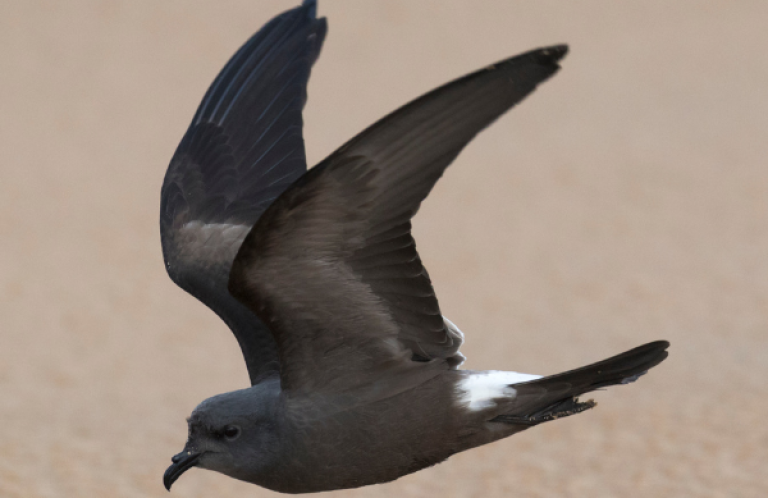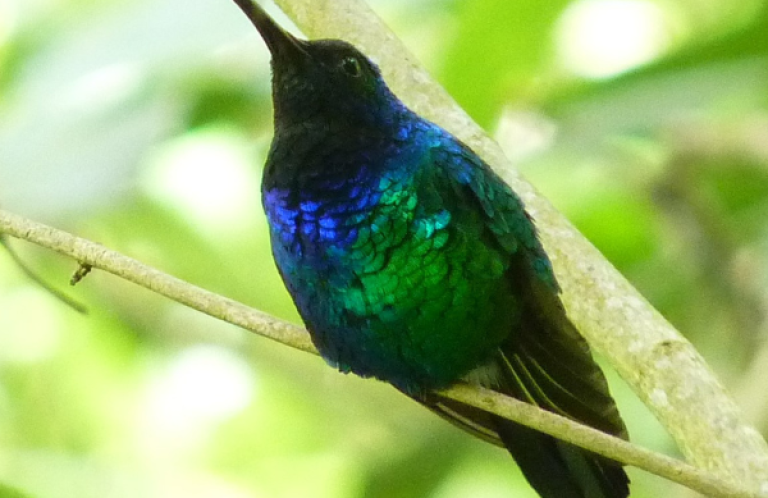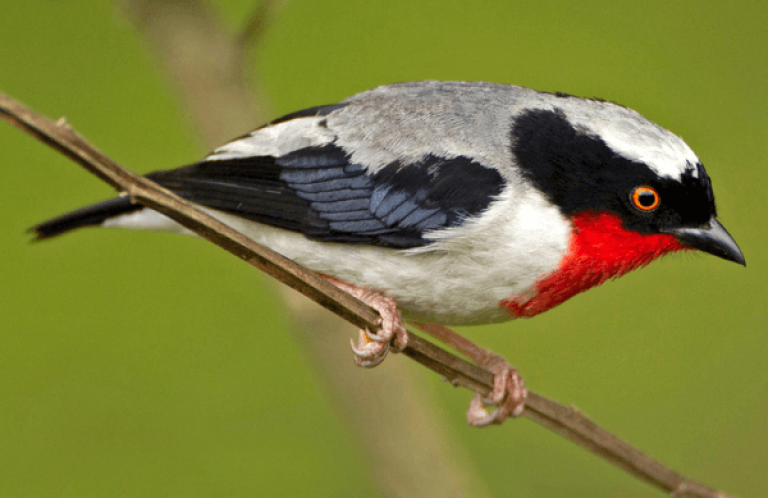New Reserve to Help Protect one of the World's Rarest and Smallest Birds
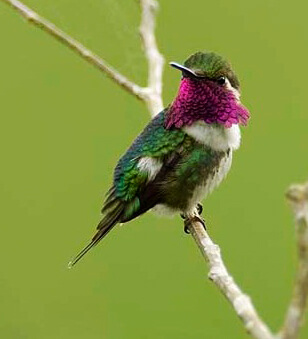 |
| Esmeraldas Woodstar by Murray Cooper |
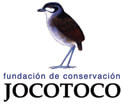 |
(Washington, D.C., June 13, 2012) One of the world's rarest and smallest hummingbirds, the tiny Esmeraldas Woodstar, will receive new protections from a reserve established in Ecuador through a cooperative effort involving Fundación Jocotoco, World Land Trust-US, and American Bird Conservancy.
This striking violet, green, white, and copper-colored hummingbird, which measures barely 2 ½” long and which local people call the “Estrellita” (little star), numbers between only 500-1,000 individuals. It is gravely threatened by habitat loss resulting from logging, development, cattle grazing, and agriculture. Less than 5% of lowland western Ecuador remains forested as a result of these activities.
The species was little known until a few years ago, when researchers discovered its primary nesting areas along streams on Ecuador's Pacific Coast, near the village of Ayampe. They also discovered that the former sleepy village was becoming a magnet for beach-loving tourists and, as a result, much woodland in the area has already been destroyed for resorts.
The new 38-acre reserve is characterized by semi-deciduous to evergreen moist forests. The woodstar breeds at lower elevations along streams adjacent to large forest patches. There is evidence that at least the majority of the population moves upslope to spend the non-breeding season (i.e., dry season ca. April-November) at the higher elevations of the coastal cordillera. Fortunately, some of the non-breeding season habitat is protected by the Machalilla National Park.
“Following our discovery that the Esmeraldas Woodstar's breeding range is completely unprotected and at severe risk of being destroyed, we immediately launched conservation efforts with the community and acquired the most vital areas to establish the Ayampe Reserve,” said Rocio Merino, Executive Director of Fundación Jocotoco.
“I am so pleased to see the wonderful Esmeraldas Woodstar finally protected, and gratified to see that the communities of Ayampe and Las Tunas have taken up the cause of conservation so strongly – they are an inspiration to us all! These first purchases are just the beginning. We need to protect much more of the Rio Ayampe Valley,” said Dr. Robert Ridgely, President of the Board of Directors of Fundación Jocotoco.
“This reserve is incredibly important for the woodstar because it is the most important known breeding site for the species that is currently protected,” said Dr. George Fenwick, President of American Bird Conservancy.
Fundación Jocotoco, with the support of WLT-US, and ABC, are actively seeking to purchase more properties to protect the Esmeraldas Woodstar and other endemics, but are also working to develop an exciting new model of community-based management of conservation reserves. The long-term goal is to protect roughly 600-700 acres.
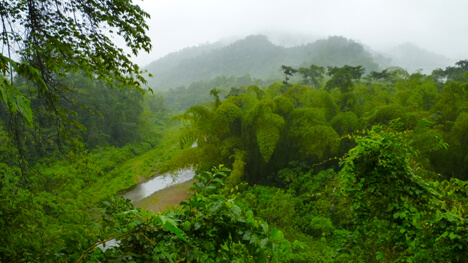 |
Ayampe Reserve by Francisco Sornzoa |
“WLT-US is proud to support Fundación Jocotoco to create its 10th nature reserve as part of our strategic network of 67 protected areas across Latin America to save the most endangered species,” said Dr. Paul Salaman, Executive Director of World Land Trust-US. “These decisive actions prove once again that purchasing and protecting the last remnants of habitat are the most effective tactics to safeguard the rarest species and prevent extinctions.”
While the reserve lies just outside of the primary development areas along the coast, many local people are moving inland where costs of land are lower, but even here land prices are increasing. Furthermore, beach development requires large amounts of fresh water and in the dry season the Rio Ayampe is the only source available. In 2011, locals became very concerned when, by the end of the dry season, the flow of water ceased for the first time in memory. There are rumors that there are plans to dam the Rio Ayampe to provide water for beachfront development. Jocotoco is working with the communities of Ayampe and Las Tunas to develop plans for sustainable tourism and community development.
In addition to tourism expansion, the immediate Ayampe area suffers from a combination of threats, including overgrazing by goats and cattle, continued loss of what little forest habitat remains, and uncontrolled dry season burning.
Other endangered bird species in the area that may benefit from the new reserve include the Grey-backed Hawk, the Ochre-bellied Dove, the Blackish-headed Spinetail, and the Slaty Becard. In addition to birds, the region is known for its high diversity of rare and endemic plants, and is one of the most important areas for endemic butterflies in Ecuador.
Initial and significant funding for the Ayampe Reserve came from a couple in California who wanted to make a difference in conservation. American Bird Conservancy provided key resources to support initial land surveys and efforts to develop the concept of the new reserve with the communities of Las Tunas and Ayampe, who have not only shown a great interest in the initiative to establish the reserve, but are also poised to become an important partner in managing the reserve to protect their “Estrellita”.





































